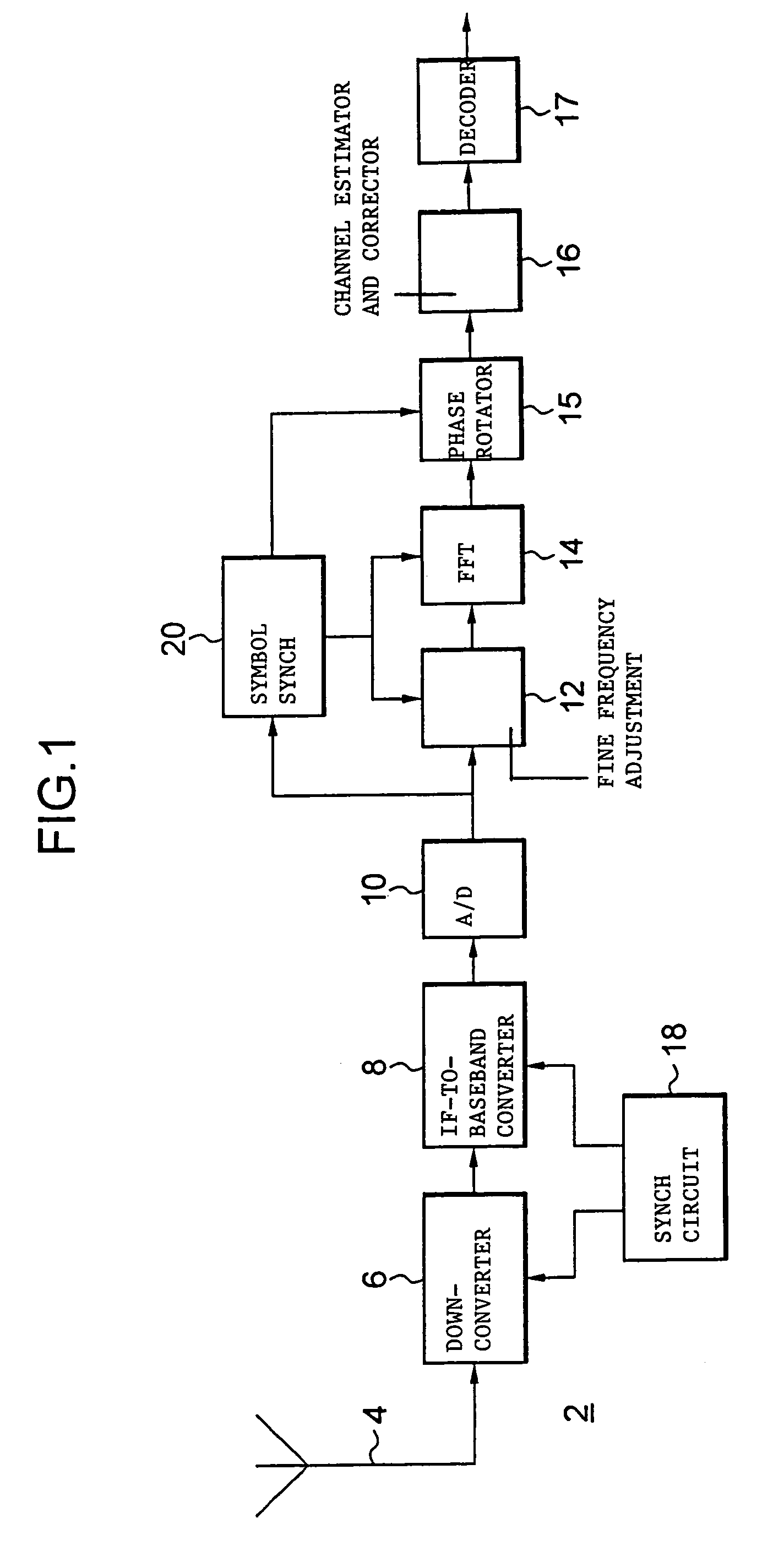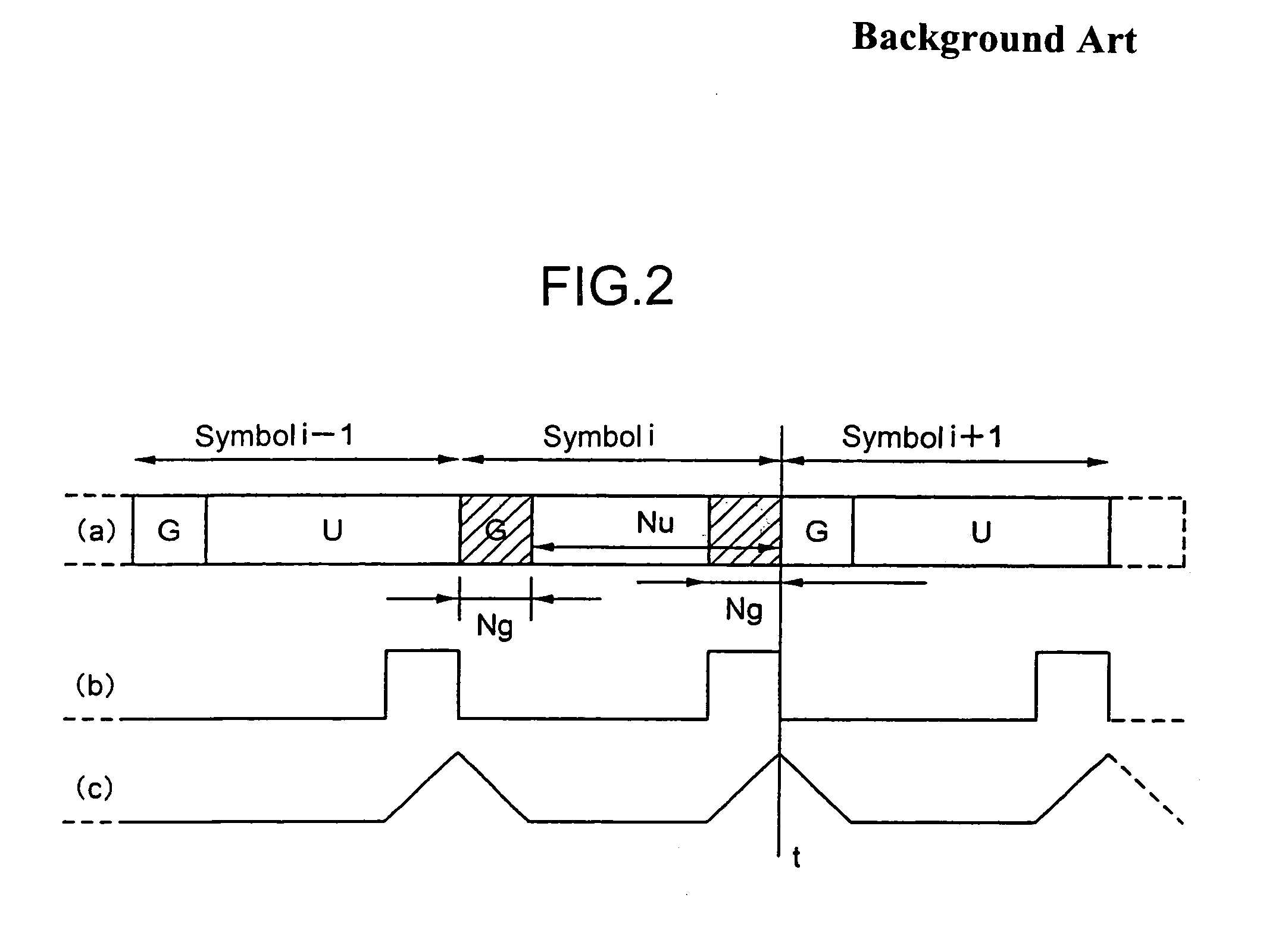Synchronizing pulse generating method and method of receiving OFDM signal
- Summary
- Abstract
- Description
- Claims
- Application Information
AI Technical Summary
Benefits of technology
Problems solved by technology
Method used
Image
Examples
Embodiment Construction
[0030]Referring to FIG. 1, an OFDM receiver 2 comprises an antenna 4 which receives a signal and presents it to a down-converter 6 which converts the RF signal to an IF signal. This is then converted into a baseband signal by an IF-to-baseband converter 8. This produces at its output complex samples of each transmitted OFDM symbol. These complex samples are digitised by an analog-to-digital (A / D) converter 10, and delivered via a fine frequency adjustment circuit 12 to a Fast Fourier Transform (FFT) circuit 14. The FFT circuit 14 converts the samples from the time domain to the frequency domain, and the symbol data at the output is provided to a phase rotator 15, a channel estimator and corrector 16 and a decoder 17.
[0031]The techniques of the present invention facilitate the provision of a feed-forward system, which doesn't rely on feedback or phase locked loops (PLL's) for adjusting the local oscillator frequencies. However, it would be possible in an alternative arrangement if de...
PUM
 Login to View More
Login to View More Abstract
Description
Claims
Application Information
 Login to View More
Login to View More - R&D
- Intellectual Property
- Life Sciences
- Materials
- Tech Scout
- Unparalleled Data Quality
- Higher Quality Content
- 60% Fewer Hallucinations
Browse by: Latest US Patents, China's latest patents, Technical Efficacy Thesaurus, Application Domain, Technology Topic, Popular Technical Reports.
© 2025 PatSnap. All rights reserved.Legal|Privacy policy|Modern Slavery Act Transparency Statement|Sitemap|About US| Contact US: help@patsnap.com



